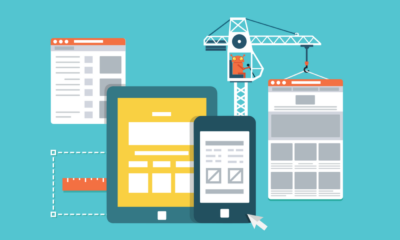AFFILIATE MARKETING
Which Platform Deserves Your Business in 2023?
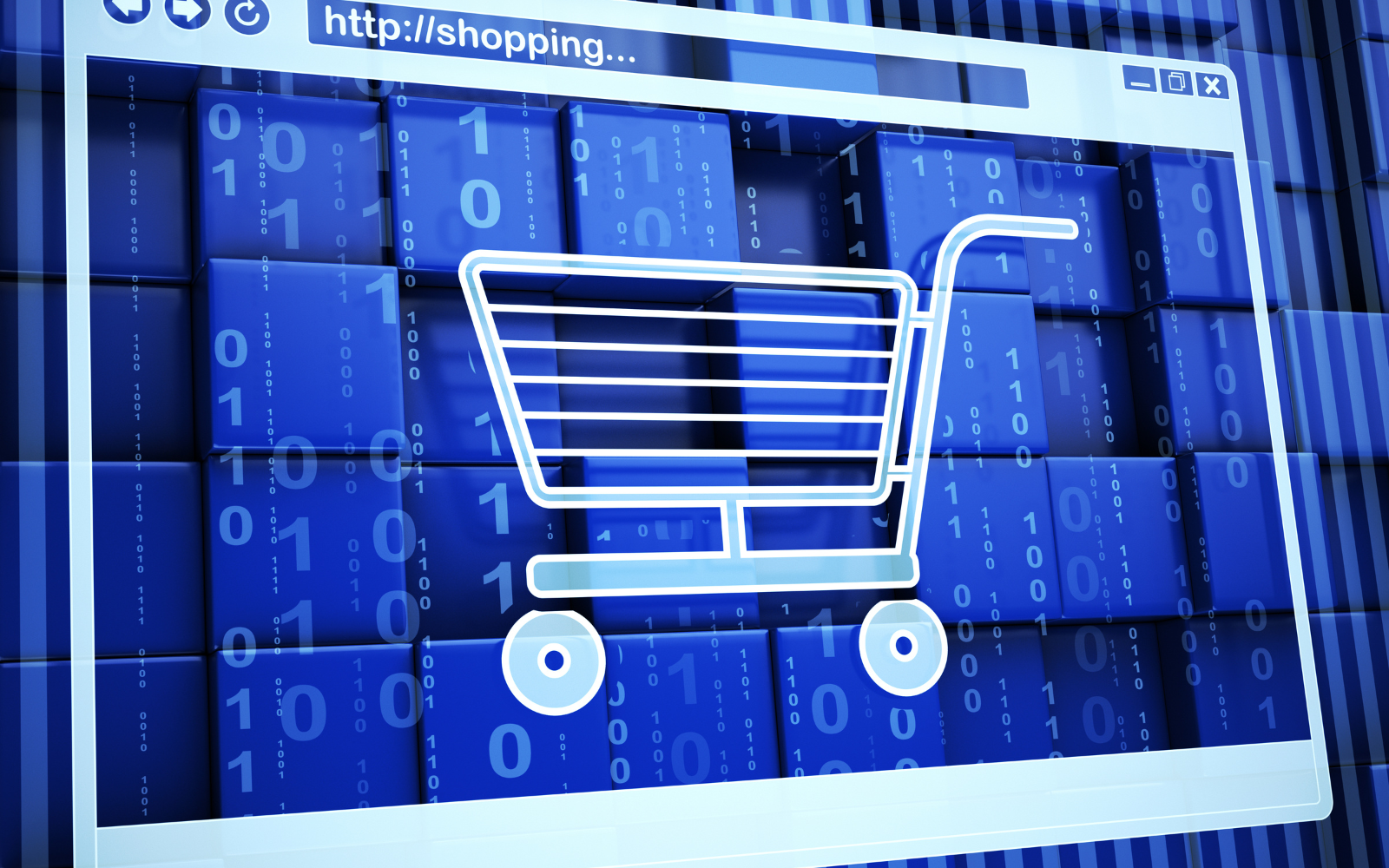
Are you struggling to decide which e-commerce platform is right for your online business? Choosing between Shopify vs Amazon FBA can be quite challenging, given their individual success and popularity.
Both platforms are indeed thriving:
According to Jungle Scout’s 2023 State of the Amazon Seller, 89% of Amazon sellers are profitable.
Meanwhile, Shopify merchants receive orders from an impressive 457 million buyers each year!
Don’t worry, though – we’re going to break down each platform’s key differences, features, and benefits so you can make an informed choice.
Shopify vs Amazon FBA: TL;DR
Key Points:
- With Shopify, you can control your customer data and set up lead capture, email marketing, and abandoned carts (leading to high customer LTV).
- Shopify gives you more leeway as a beginner. You don’t have to meet strict quality standards, and you don’t have to invest thousands in stock.
- With Shopify, you can test many different products, so there is less margin of error.
| Shopify | Amazon FBA | |
| Platform | Standalone e-commerce | Online marketplace |
| Customization Options | Extensive (more control, design flexibility) | Limited (less control over storefront) |
| Fees | Monthly subscription + transaction fees | Subscription + referral + storage + fulfillment fees |
| Unique Revenue Opportunities | -Can implement funnels -Lead capture -One-click upsell/downsells -Cart abandonment -List-building -Pixel-tracking/retargeting |
Pre-existing inbound search traffic |
| Brand Identity | Better for unique brand building | Better for leveraging Amazon’s pre-established brand and trust |
| Skills to Succeed | -Marketing skills & conversion optimization. -Manage every facet of your business yourself, or outsource it |
-Keyword research -Risk management -Risk tolerance -Inventory management -Allowance of a longer window to break-even, profitability |
| Risk, Inventory, Margins | – Less restrictions; beginner-friendly – Can begin with less investment via dropshipping – Can test many products without investing in stock – More control over your margins |
-Requires more investment in inventory; not beginner-friendly -Lower margins |
Shopify Pros and Cons
One of the things I love about Shopify is its customization and branding capabilities. I’ve been able to design my store exactly how I wanted it, which has helped with conversions (I’ve had a lot of success creating high-converting landing pages and upsells with Zipify apps).
Shopify also allows you to test products with low risk via drop shipping. You only need to invest in stock once you’ve proven that a product can sell.
By comparison, you must invest in stock for Amazon. That presents a sizable risk – what happens if it doesn’t sell?
Shopify also offers me more control over customer data. This is huge, especially when you’re buying traffic. For each visitor that visits my page, I have the opportunity to capture them as a lead.
I can also place a tracking pixel on the page and retarget them. I can’t stress enough how important it is to own your traffic and have access to all that valuable information.
And last but not least, the variety of payment gateways Shopify offers has been super helpful. It’s given my customers more payment options.
Plus, I’ve had the flexibility to choose the payment provider that best suits my needs, and that’s been beneficial for selling “higher-risk” products that may not fly on Amazon.
There are also a few drawbacks to consider. Let me tell you about some challenges I faced regarding marketing and customer support.
One disadvantage of using Shopify is that it does not have the same built-in traffic and customer base as Amazon. While Shopify offers tools to help sellers optimize their stores for search engines, it can be easier to attract customers with the built-in audience that Amazon provides.
I had to learn various skills like:
- Landing page design
- Copywriting
- Conversion optimization
- Paid ads
- Email marketing
Also, I had to deal with customer support, which can be time-consuming. So, I hired a professional on Fiverr to ensure top-notch service, which helped save time and let me focus on scaling.
One of the aspects that concerned me was the need for more control over quality and fulfillment with the dropshipping model.
It’s possible to address this concern by teaming up with a fantastic supplier. We’ve ensured that product quality remains top-notch and fulfillment runs seamlessly.
In addition, by staying vigilant about quality control and shipping times, I minimized nasty chargebacks and kept customers happy.
Amazon FBA Pros and Cons
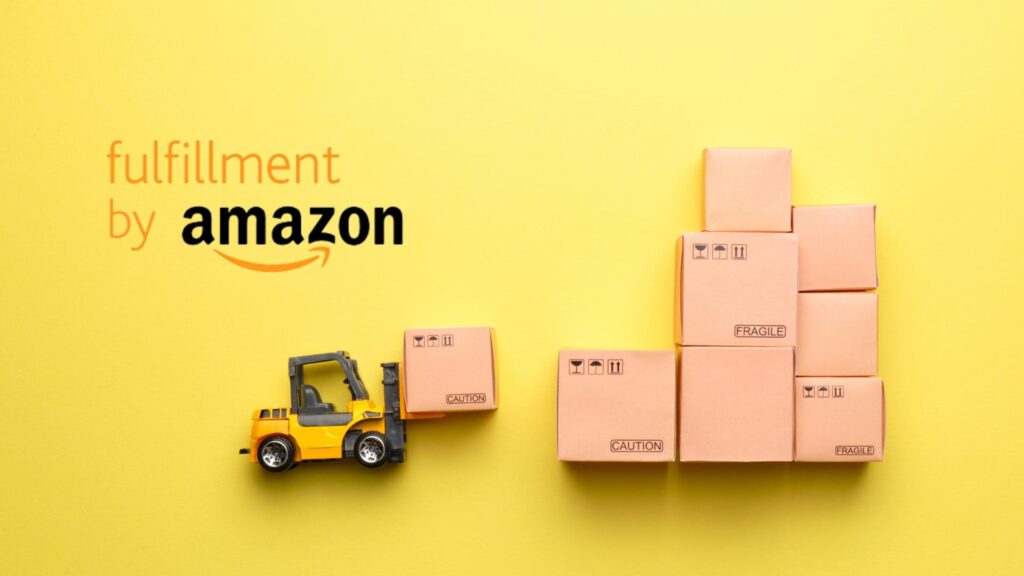
Here’s how Amazon FBA works:
When a customer places an order, Amazon handles the packing and shipping of the product. As a result, sellers don’t have to worry about storing inventory or fulfilling orders themselves – that’s all handled by Amazon’s network.
Amazon has a vast customer base (300 million active users worldwide) that can be difficult for individual sellers to reach independently.
In addition to access to a large customer base, using Amazon FBA also offers Prime eligibility for products. Prime members receive free two-day shipping on eligible products, which can increase visibility and sales for those items.
However…
Despite these benefits, there are also some drawbacks.
For example, restrictions limit certain products sellers can offer through FBA. In addition, sellers must adhere to specific labeling requirements and ensure that their products meet certain standards before Amazon’s fulfillment center stores them.
FBA sellers are also subject to Amazon’s policies and decisions, which can be unpredictable. For example, Amazon may suspend a seller’s account without warning or remove a product listing if it violates terms of service.
Using FBA means that sellers have less control over customer data. This can make it challenging for sellers to build customer relationships outside the Amazon platform.
Lastly, competition is fierce on Amazon. Millions of third-party sellers are vying for buyers’ attention, so it’s easy for your products to get lost in the crowd.
Therefore, you must invest in stock to maintain your margins and sell competitively.
That said, navigating the Amazon marketplace can be like walking through a minefield, and a single bad product investment can really set you back. That’s why I swear by Jungle Scout.
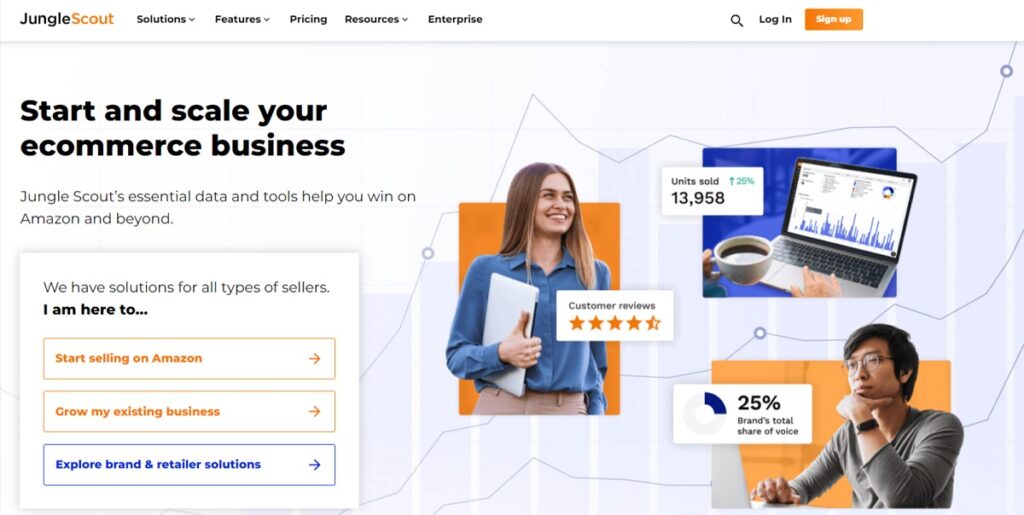
It’s an awesome tool that uses real-time data to help you find genuinely profitable products. You’ll have the edge you need to pick products that actually sell and avoid costly mistakes. For more info, check out our full Junglescout review.
The last drawback is the fees, which can add up quickly and cut profit margins. My margins were around 10-12% for my Amazon operation, which is lower than my Shopify dropshipping operation (20-30%).
Setting up a Shopify store

Set up a Shopify store with these easy-to-follow steps:
- Register on Shopify: Create your store in no time by visiting shopify.com and providing the required information.
- Choose a niche: What niche will you focus on? (Here are the best dropshipping niches.)
- Add your products: The pricing strategy, store design, shipping, and more depending on the items you offer.
- Choose a Shopify theme: Select a visually appealing and functional theme to enhance your store’s appearance.
- Set up your back office: Configure basic settings and manage your store’s operations.
- Set up a custom domain: Personalize your store’s web address to establish a unique brand identity.
- Launch your Shopify store: With everything in place, unveil your store and start selling.
Setting up an Amazon FBA store

Here are the steps to set up an Amazon FBA store:
- Create an Amazon Seller Account: Sign up at sellercentral.amazon.com. Choose between an Individual or Professional plan.
- Choose your products: Conduct thorough market research and select the products you want to sell. Consider factors such as demand, competition, and profitability.
- Find a supplier: Source your products by finding a reliable supplier or manufacturer. Ensure they meet quality standards.
- Create product listings: Set up your product listings on Amazon, including product titles, descriptions, images, and pricing. Optimize your listings using relevant keywords and high-quality content to improve visibility in search results.
- Ship your products to Amazon: Prepare your products for shipment following Amazon’s FBA packaging and labeling requirements. Then, send your inventory to the designated Amazon fulfillment centers.
- Set up Amazon FBA: In your Seller Central account, enable Amazon FBA for your chosen products. Amazon will now handle storage, picking, packing, shipping, and customer service on your behalf.
Shopify Marketing and Advertising
I’ve found that Shopify presents many marketing opportunities to drive traffic and increase sales for my online store.
One strategy I’ve had great success with is content marketing through their integrated blogging platform. By creating valuable, high-quality blog posts for my target audience, I’ve established myself as a trusted expert in my niche and built stronger connections with potential customers.
Aside from blogging, Shopify has a range of marketing tools to help promote my business. Email marketing is particularly powerful, as it lets me send targeted, personalized messages to subscribers who opted-in for updates.
With integrations like Klaviyo, I’ve been able to set up abandoned cart flows and segmented campaigns. Remember, email marketing is extremely profitable – it has a 4200% ROI on average for every $1 spent.
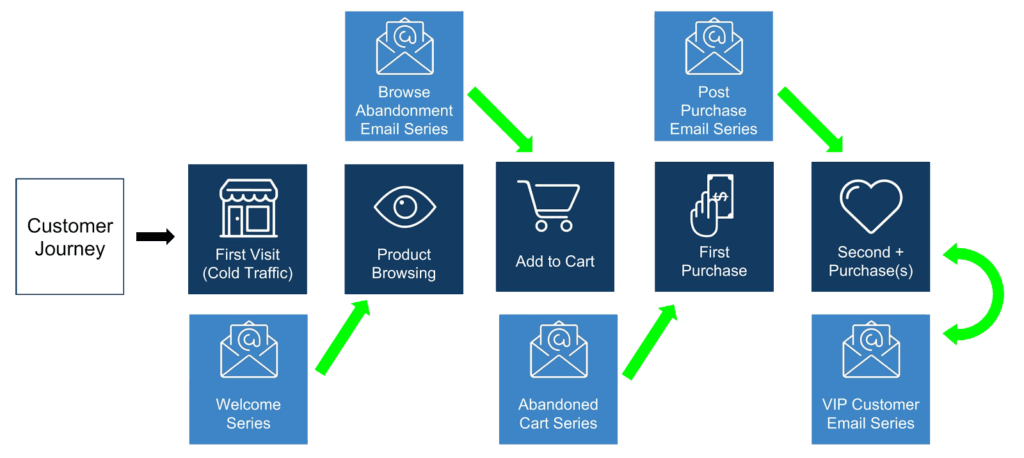
What I truly appreciate about Shopify is the ability to own customer data. Whenever someone visits my store, I can capture them as a lead and retarget them using tracking pixels.
This advantage sets Shopify apart from Amazon, where customer information is restricted.
Amazon FBA Marketing and Advertising
This section will discuss some of the most effective ways to win customers on Amazon FBA.
Amazon PPC (Sponsored Products)

One of the most popular advertising options is Amazon PPC or Sponsored Products. This type of advertising allows sellers to bid on specific keywords related to their products, which appear at the top or bottom of search results pages.
You can use Amazon’s targeting options such as:
- Automatic targeting
- Manual targeting
- Product targeting
Amazon’s Promotional Tools (Coupons, Lightning Deals)
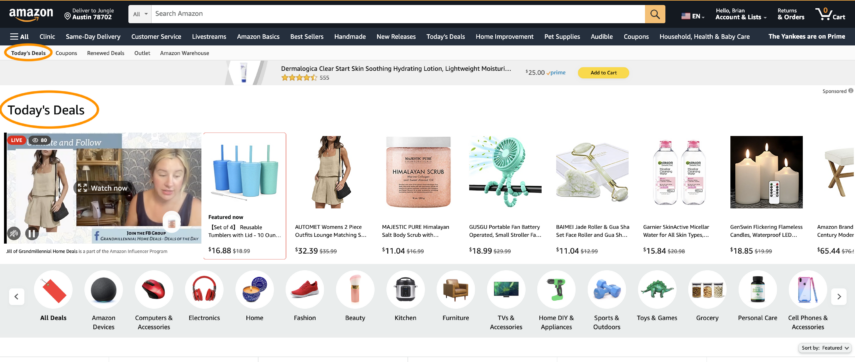
Another way to attract customers on Amazon FBA is by using Amazon’s promotional tools, such as coupons and lightning deals.
Coupons allow you to offer discounts on your products, while lightning deals offer time-limited promotions with limited quantities.
Using them will increase your sales velocity and improve your product rankings in search results pages.
Optimizing Product Listings for Amazon Search
Optimizing your product listings for Amazon search is crucial to winning customers on Amazon FBA.
The key elements of an optimized product listing include:
- An engaging title
- High-quality images
- Detailed descriptions with bullet points
- Competitive pricing
- Positive reviews with high ratings
- Relevant keywords in titles and descriptions
You can use Amazon’s A+ Content feature to enhance your product descriptions with additional images and text.
Shopify Inventory Management and Fulfillment
Inventory management is a crucial aspect of any e-commerce business.
It involves tracking and managing the flow of goods from suppliers to warehouses and customers. Unfortunately, companies can experience stockouts, overstocking, and other issues without proper inventory management.
Dropshipping vs Third-Party Logistics (3PL) vs Self-Fulfillment
Businesses have three options:
- Dropshipping
- Third-party logistics (3PL)
- Or self-fulfillment
With drop shipping, you outsource warehousing and fulfillment to a third party. In this case, you don’t own the inventory. Instead, you would pay the dropshipping service provider on a per-item basis.
Self-fulfillment involves storing products in-house and shipping them directly to customers when orders are placed.
3PL involves outsourcing warehousing and fulfillment services to a third-party provider who handles storage, packing, and shipping on behalf of the business. You would invest in stock, and then the warehouse would store your inventory and fulfill the orders.
Shopify Fulfillment Network

For those who prefer not to handle order fulfillment themselves or use 3PLs outside Shopify’s network, Shopify offers its own fulfillment network: Shopify Fulfillment Network (SFN).
SFN provides end-to-end fulfillment services, including storage, packing & shipping for merchants with high-volume sales while allowing them complete control over their branding and customer experience.
One advantage of SFN is the Shopify Promise badge, a premium feature that displays order delivery dates on product pages. This increases buyer trust and can lead to higher conversion rates.
Amazon FBA Inventory Management and Fulfillment
As an Amazon seller, managing incoming and outgoing inventory is essential.
Too much inventory ties up capital and storage space (you’ll also incur fees).
If you don’t have enough inventory on hand, you will lose out on sales.
The rule of thumb: it’s ideal to meet demand on a rolling four-week basis.
Inventory Performance Dashboard

One of the most valuable tools that Amazon provides its sellers is the Inventory Performance Dashboard (IPD).
This dashboard displays essential inventory information such as sell-through rates, aging stock alerts, and recommended actions to optimize storage.
Machine Learning-Based Inventory Management System
FBA sellers get access to Amazon’s machine learning-based inventory management system.
This system uses inputs like the cost of goods sold (COGS), shipment time, and historical data from Amazon to forecast customer demand accurately and set optimum inventory levels.
This allows you to automate many aspects of your supply chain management process.
For example, you can:
- Set reorder points: The system will reorder when inventory falls below the threshold.
- Forecast demand: Historical sales data predict the inventory required to meet future demand.
- Optimize storage: Recommends stock level for fulfillment centers based on popularity in specific regions.
Inventory Performance Index
Amazon will track your inventory performance (IPI) score based on your ability to manage your inventory levels effectively.
This score ranges from 0 to 1000 and is calculated based on factors like excess inventory levels, stranded inventory percentage, and order defect rate.
If your IPI score falls below 400, you may face additional fees or restrictions on creating new listings or sending more inventory.
On the other hand, if you maintain a high IPI score consistently, Amazon may reward you with lower fees or priority placement in search results.
Pricing Plans and Selling Fees

Shopify offers various pricing plans that cater to different business needs. The basic plan starts at $25 per month, while the advanced plan costs $399 per month.
Each plan has different features, including the number of staff accounts, gift cards, and professional reports. However, one thing that remains constant across all plans is the transaction fee charged by Shopify.
The Shopify Payments transaction fee ranges from 2.4% to 2.9% + 30 cents per transaction, depending on the pricing plan selected by the user.
In addition to transaction fees, Shopify also charges a referral fee ranging from 0.5% to 2% for sales made through external channels like Facebook and Pinterest.
Credit Card Rates
Shopify’s credit card rates vary depending on the user’s chosen pricing plan. Basic plans have higher credit card rates than more expensive plans. For instance, basic plans have credit card rates ranging from 2.4% to 2.9% + 30 cents per transaction compared to lower rates offered by more expensive plans.
Amazon FBA Fees and Revenue Potential
While Amazon FBA can be a convenient option for many sellers, it’s important to understand the fees associated with using Amazon FBA.
Storage Fees
One of the main fees associated with using Amazon FBA is storage fees. These fees are charged based on the size and weight of your product and how long it has been stored in an Amazon warehouse. Storage fees are assessed monthly for standard-size items, while oversized items are charged daily.
Regularly review your inventory levels and remove any slow-moving or excess inventory from Amazon’s warehouses to avoid excessive storage fees.
Fulfillment Fees
In addition to storage fees, Amazon FBA charges fulfillment fees for each item shipped out of their warehouse. These fees vary depending on the size and weight of the product being shipped. However, these costs can be offset by the convenience of having Amazon handle all aspects of order fulfillment.
Referral Fees
Another fee that sellers need to be aware of when using Amazon FBA is referral fees. These commissions are paid to Amazon for each sale made through their platform. Referral fees typically range from 6% to 45%, depending on the product category.
FBA Removal Fees
As an Amazon seller, you may encounter situations where you need to return your inventory from an Amazon warehouse.
The fees vary depending on the size of the product category it falls into – standard-size or oversized. Standard-size products generally have lower removal fees than oversized ones. The removal fees range from $.97 per unit to $13.05 per unit for oversized ones.
FBA Disposal Fees
Now that we’ve covered removal fees let’s talk about disposal fees. Disposal fees are charged when a seller requests Amazon to dispose of their inventory rather than return it or store it in an Amazon fulfillment center. These fees help cover the cost of properly disposing of the products – they follow the same pricing structure as the removal fees.
Shopify vs Amazon FBA Final Thoughts
Ultimately, where to sell your products depends on your business goals and target audience.
If you want less risk and more control over your brand, then Shopify may be the better option.
If you want to reach a wider inbound audience and leverage an established brand, then Amazon may be the better choice. Especially if you leverage a tool like Jungle Scout to help you make the best possible decisions!
However, selling on both platforms can help diversify your sales channels. By listing your products on both Amazon and Shopify, you can take advantage of the benefits of each platform while minimizing their drawbacks.
AFFILIATE MARKETING
How to Make Hard Decisions Or Run The Risk of a Hard Life

Entrepreneurship is an endless series of hard decisions. I’m sure you’re facing one right now. Sadly, I can’t give you the right answer — but I can offer you something new to consider.
To really appreciate this, I first want to tell you about someone who faced a gut-wrenching choice of his own.
I’ll call him Steve. He’d stolen things, served time in prison, and wanted to turn his life around. Finding a job was hard, but he eventually landed some freelance work for a big company. He threw himself into it, outworking everyone and getting noticed.
The rest of this article is locked.
Join Entrepreneur+ today for access.
AFFILIATE MARKETING
6 Non-Negotiables for Women in Power

Opinions expressed by Entrepreneur contributors are their own.
As I’ve started to reach new growth milestones in my business, I’ve had this growing realization: Knowing your non-negotiables isn’t just important; it’s essential. Not having them clear? Well, that’s a straight ticket to Discontent City, which, let me tell you, doesn’t do any favors for your success, present or future.
It’s way too easy to let things slide, isn’t it? You make excuses for others (and yourself) and turn a blind eye to signs that all’s not well because, hey, losing a client sounds like a nightmare, right? Or maybe you’re so dazzled by what could be that you compromise what is without even realizing it.
These thoughts have been swirling in my head ever since I attended the Black Women’s Power Summit. The stories I heard from these incredible women, who’ve faced and conquered massive hurdles to secure their spots in positions of power, really hit home.
Here are six non-negotiables from myself and some of the powerful women we all look up to that will help you maintain your success and help you push through to the next level.
Related: Stepping Into Your Power as a Female Leader
1. Have uncomfortable conversations immediately
Let’s have uncomfortable conversations. I used to dodge them like a pro. But, facing them head-on? That’s where the magic happens. More often than not, I’d find out I was missing a piece of the puzzle. Whether they changed my view or cleared the air, those talks always left me feeling lighter, ready to focus on what matters.
2. Wait 24 hours before making decisions fueled by emotion
And here’s a rule I live by now: If a decision is riding on a wave of emotion, I hit pause for 24 hours. It’s amazing what a little time can do for perspective.
3. Don’t accept less than the energy you bring
Accepting less than I’m giving? No more. That’s true for work and life. Steering clear of toxic people sounds obvious, but we’ve all been there, keeping someone around when, deep down, we know they’re just bringing drama and draining our energy.
Related: 5 Women Entrepreneurs Share Their Top Advice for Finding Your Path to Career Success
4. Don’t be afraid to ask things that enable you to show up as your best
When national talk show host and actress Sherri Shepherd was asked to be on tour with Babyface, the local glam team was not equipped to style a woman of color. The team could not style her wig, and the foundation didn’t match her skin. Can you imagine having to host a large-scale event, looking up at the monitor, and being distracted because the reflection is not of your standard?
As women, it’s often implied that asking for anything more than what is provided is considered “high maintenance.” Don’t be afraid to ask for what you need to show up as your best self, and don’t expect anyone to understand your request as they’re not on your path and they’re not the ones who have to show up in your shoes.
5. Understand that work-life balance is a lie
I listened to Thausandra Brown Duckett, CEO of TIAA, talk about how work-life balance is a lie. Her suggestion is to treat your life like a diversified portfolio. She said work-life balance is a lie because it never reconciles. She suggests living your life like a diversity portfolio. Write down everything that matters to you, and allocate based on your priorities. Over time, you will outperform in all areas. Do not put all your time or energy into one thing. Don’t forget to give yourself the grace to recalibrate your portfolio as needed.
6. There must be incentives to innovate
And there’s one gem I picked from Thai Randolph, who co-founded HartBeat Productions with Kevin Hart, that’s become a mantra for me: She said that in every opportunity, there must be something intrapreneurial. What that looks like is having the opportunity to build things, break things and scale things. There has to be a real incentive to innovate.
Related: 5 Trailblazing Black Women Entrepreneurs Share How They’re Breaking Barriers — And How You Can Too
Honestly, my non-negotiables aren’t groundbreaking, but ever since I’ve put them front and center, communicated them to my team and decided to live by them, the difference has been transformational. Thanks to these non-negotiables, my company, Society22 PR, made it on Inc.’s Fastest Growing Companies list, and we have been able to nurture a company culture that’s beyond what I dreamed.
So yes, these reflections on my non-negotiables have reshaped my approach to business. It’s not just about setting boundaries; it’s about creating a space where you, your team and your business can thrive. And let me tell you, the result has been pretty great.
AFFILIATE MARKETING
How to Build and Maintain Strong Agency-Client Relationships

Opinions expressed by Entrepreneur contributors are their own.
For marketing, advertising and PR firms, the relationships built between the company and clients are critical for driving repeated business, sustained growth and positive word of mouth. Maintaining these vital relationships is becoming increasingly difficult due to a fiercely competitive market where clients are looking for higher engagement, lower costs and better quality products and services.
The good news is that maintaining strong relationships with your clients is well-known to promote high retention rates and better revenue. One study found that customers who form a strong emotional connection with a brand have a 300% higher lifetime value compared to consumers who failed to build a relationship. For agency leaders, it’s important to have strategies in place to build and foster strong, long-lasting relationships with your clients.
Related: How to Make Your Clients Love Working With You
1. Set clear expectations and deliver on your promises
One of the best ways to build a relationship with your customers is by always delivering superior products and services. However, accomplishing this starts at the beginning of the relationship by setting clear expectations on what they can expect. Being transparent about the intended outcome, delivery timeframes and communication helps avoid any frustration that might come from misunderstandings or misaligned expectations.
For new firms, it’s especially important to impress your potential clients. Unfortunately, too many companies make big promises that they can’t successfully deliver. By overpromising, you set your customer up for potential disappointment. Instead, always offer realistic expectations with the intention of over-delivering. The customer will be impressed when you are able to deliver the marketing campaign in three weeks when you originally set an expectation of 25 business days. You might even throw in an unexpected freebie or perk that they weren’t expecting. By always keeping your promises and over-delivering when possible, you’ll build a relationship based on trust and will be recognized as a reliable business partner.
2. Focus on creating value first
Selling your services is an important part of growing revenue for your business. However, focusing solely on what you can get out of your customers could be sabotaging your ability to build strong relationships with your clients. Instead, focus on first providing them with value. This starts well before you sign your first contract. When clients see tangible value and benefits immediately from working with your business, they are more likely to reciprocate by remaining loyal customers to your company.
3. Communication, communication, communication
Sustaining an ongoing relationship with your clients requires connecting on a regular basis, even if they aren’t ready to purchase from you again. The problem is that many companies focus on connecting with their clients only when they want to make a new sale. This isn’t an effective way to build strong customer relationships because it can be perceived that you only care about them when they have something you want (i.e., their money).
Taking the time to check in with your clients on a regular basis is a great way to maintain a strong relationship. This also helps eliminate tension and remove the defenses that come up when every contact ends up being a sales pitch. These check-ins can be in-person meetings, phone calls or even a simple email.
It’s important to understand that no two clients are the same. Finding ways to tailor your communication to their preferences and needs lets the client know that you understand their needs, challenges and goals.
Related: 4 Tips to Forge Winning Client Relationships for the Long-Term
4. Own your mistakes
From time to time, your agency is going to make a mistake or upset a customer. That’s unavoidable. You’re going to miss a deadline, deliver an advertisement that should have never made it past the quality control process or drop the ball entirely. How your business responds to these issues can make a huge difference with your customers. Owning the mistake, being transparent about what happened and proactively working on a solution, lets them know that you care about resolving the issue.
Delivering difficult news or discussion challenges is never easy. By demonstrating your willingness to address challenges head-on and find mutually beneficial solutions, you’ll strengthen your client relationships and position yourself for long-term success.
5. Learn from failure through continuous improvement
Sometimes, you’ll lose clients no matter what your business does. This can be painful, especially if it’s a major client that generates a significant portion of your revenue. While the goal is to retain your clients, there is a silver lining to client turnover. As frustrating as it might be, always try to part ways on good terms. You never know when they might decide to come back to your business. A good way to do this is by offering them some form of value on their way out. For example, if you operate a digital marketing firm, you show good faith by supporting their transition to the next agency.
Also, taking the time to understand why they are leaving can highlight opportunities for improvement. Over time, taking action on these lessons can greatly strengthen your processes and ensure you avoid any roadblocks to building and sustaining long-term customer relationships.
Related: 5 Ways Your Agency Can Improve the Client Experience
Acquiring new customers is not only challenging, but expensive as well. It’s much more effective to spend time retaining the customers you have. By building strong customer relationships, entrepreneurs can protect their revenue and position their companies for growth and success despite operating in the competitive world of marketing, advertising and PR.
-

 MARKETING6 days ago
MARKETING6 days agoNavigating the Video Marketing Maze: Short-Form vs. Long-Form
-
SEARCHENGINES6 days ago
Daily Search Forum Recap: April 26, 2024
-
SEARCHENGINES4 days ago
Daily Search Forum Recap: April 29, 2024
-

 SEARCHENGINES5 days ago
SEARCHENGINES5 days agoOffline For Last Days Of Passover 5784
-
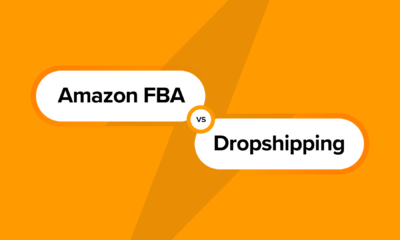
 WORDPRESS6 days ago
WORDPRESS6 days agoThe Best Option for Online Stores
-

 MARKETING6 days ago
MARKETING6 days agoMicrosoft unveils a new small language model
-

 PPC5 days ago
PPC5 days agoHow to Promote Your Digital Marketing Agency: 4 Growth Strategies
-

 MARKETING5 days ago
MARKETING5 days agoQuiet Quitting vs. Setting Healthy Boundaries: Where’s The Line?








